8 Steps to Complete an IHHC (QI) Project

Visit the ABPMR IHHC (QI) Project Wizard, answer a few questions, and get suggestions and resources for a IHHC (QI) project topic relevant to your practice.
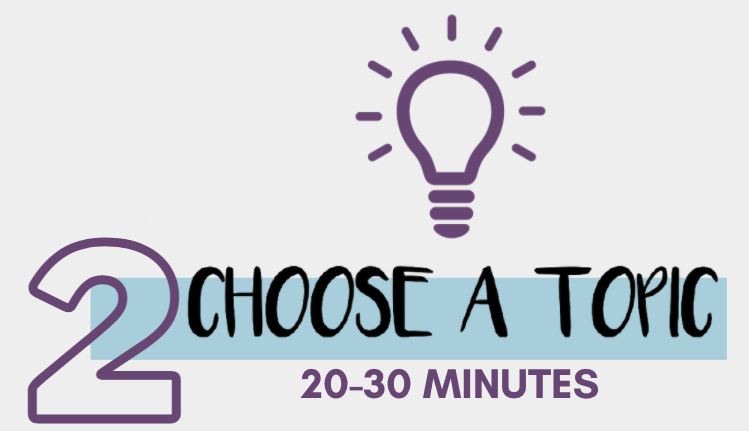
Choose a topic template from the ABPMR or create your own project— think of an issue in your practice that bothers you or is creating inefficiency. Choose a topic where making one small change could save time, money, or improve the care you provide.
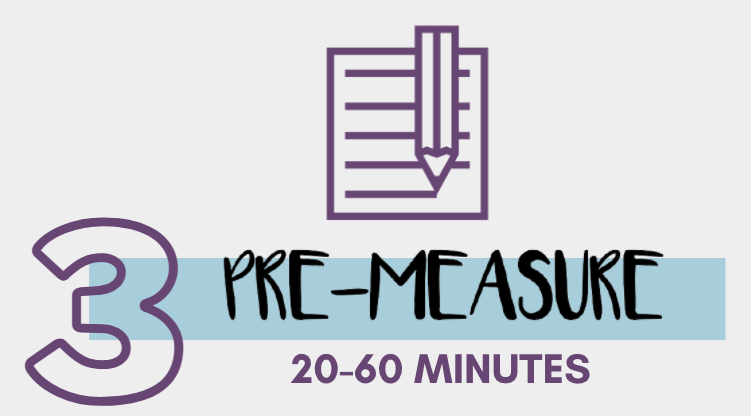
Gather the necessary data that will allow you to measure your progress throughout the project. This could be taken through chart review, surveys, self-reporting, etc. Set a specific goal and timeframe, and decide which variable you'll change to see if it results in improvement.
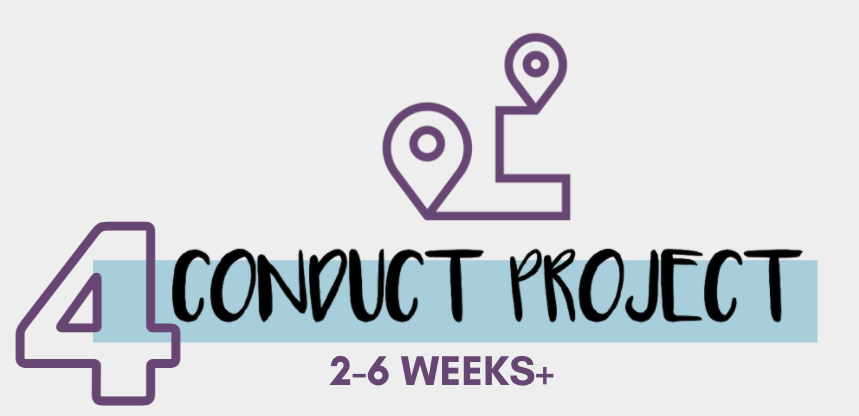
Begin your project! Record the impact of the change you made to see if you're on track to reach your goal. Completing a project takes an average of 4 weeks or more, depending on your goals.
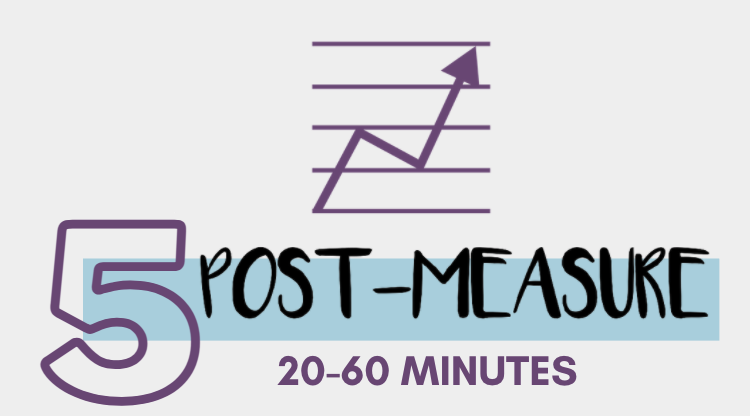
Reflect on your project. What are the results? Did you achieve your goal? Even if your project wasn't successful, you can still submit it for IHHC (QI) credit.
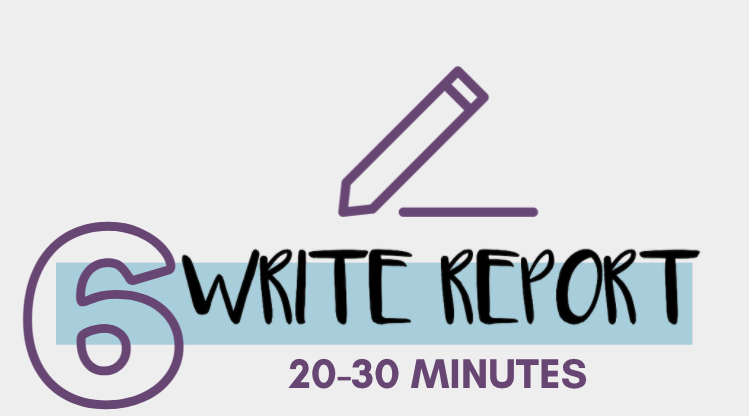
Use the IHHC (QI) project submission platform to detail your project process and results. Visit ABPMR IHHC (QI) Submission Platform site to write up and submit your project to the ABPMR.
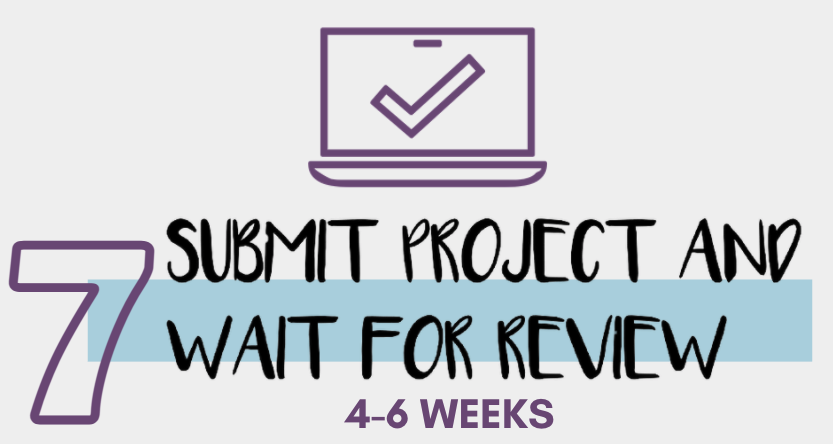
An ABPMR reviewer will review your project and get back to you with approval or suggestions for revisions.
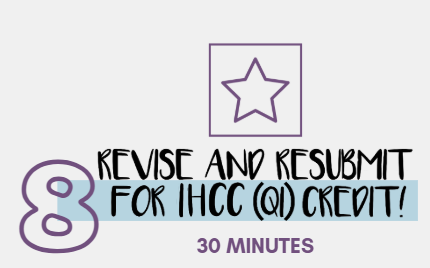
Make any necessary revisions to your project then resubmit for credit. It usually takes 2-4 weeks for re-review before your project is officially approved.
STEP-BY-STEP PROMPTS
ABPMR Guided IHHC (QI) Project Templates
Based on our create-your-own self-guided IHHC (QI) template, the ABPMR has released several guided IHHC (QI) project templates to provide a little more support and guidance for those looking for ideas or direction.
The questions are the same no matter which template you use, but the Guided IHHC (QI) project templates provide topic-specific prompts before each question to help guide diplomates in the Plan-Do-Study-Act cycle. These are topics that have been identified and suggested by diplomates as those with wide applicability to a range of practice settings.
See project topics below and click ‘Begin This Project’ when you are ready to create an account at the ABPMR IHHC (QI) Submission Platform site and start your IHHC (QI) project.
-
Baclofen Pump Management
Intrathecal baclofen (ITB) pump complications may result in poor therapeutic effect, withdrawal, hospitalization, or reoperation. Consider this project if you have concerns about ITB pump management in your practice.
Begin This Project -
CAUTI Management
Catheter associated urinary tract infections (CAUTIs) are one of the most common complications associated with hospital admission. CAUTIs can result in patient morbidity and mortality, extended hospital stays, and increased health care costs. Consider this project if your facility’s CAUTI rate is higher than expected or desired.
Begin This Project -
Cerebral Palsy Hip Surveillance Program
Children with cerebral palsy (CP) are at increased risk for developmental hip dysplasia (DDH) requiring hip surveillance at periodic intervals for optimal medical care. The American Academy of Cerebral Palsy and Developmental Medicine (AACPDM) has developed a care pathway to address this medical concern in patients with CP during their developmental years (CPHS). Consider this project to integrate this pathway into your care.
Begin This Project -
Create my own IHHC (QI) Project
Create your own IHHC (QI) project based on minor annoyances, inefficiencies, or persistent issues in your practice, your education work, your administrative role, or your research that you could improve by completing a QI project.
Begin This Project -
Department Wellness/Burnout Initiative IHHC (QI) Project // In collaboration with The AAP Chair Council
Physician burnout is a national problem amongst practitioners due to the ever-changing face of health care, including EMR burdens, decreased reimbursements, increased requirements and policing of documentation, insurance denials, loss of autonomy, and more. Consider this project if you’re concerned about burnout and physician wellness in your department or practice.
Begin This Project -
Diversity and Inclusion
Participation and contributions from diverse individuals is critical to the future of medicine and our civil society. Consider this project if there are improvements to be made in areas such as staff and resident diversity, unconscious bias in payer and insurance considerations, holiday considerations, patient satisfaction measures, or if you have your own idea for making a small improvement in this vital area.
Begin This Project -
Exercise is Medicine
Exercise has been shown to improve cardiovascular and respiratory function, cognition, mood, sleep, and physical function. Exercise can reduce morbidity and mortality, pain, and fall risk in older adults. This project could help integrate physical activity into your daily practice. You can see an action guide for this project here.
Begin This Project -
Functional Assessment
Literature suggests that tracking the functional status of patients with spine-related pain improves outcomes. Consider this project if you could begin consistently obtaining a functional status measure in this patient group and utilizing this effectively amongst your team.
Begin This Project -
Improving Communication
Effective communication is important in almost every area of a physician’s professional work. Consider this project if trainees describe your communication as too abrupt/directive/distant, patients have requested diagnosis-specific education, or you see opportunities to improve communication about next appointments or other care aspects.
Begin This Project -
Improving PPE Use
Proper use of personal protective equipment (PPE) in health care settings has always been important for patient and provider safety, but PPE has gained increased attention in the era of COVID-19. Consider this project if there is concern in your work that PPE is not being used optimally.
Begin This Project -
Improving Wait Times
Longer-than-optimal patient wait times lower patient satisfaction scores; implementing simple changes to decrease wait times could make a major difference to your patients. Consider this project if long patient wait times are a persistent problem in your practice.
Begin This Project -
Injection Timeouts
Research has demonstrated that pre-procedure timeouts decrease procedure-related errors. Consider this project if your practice needs consistency in performing pre-procedure timeouts.
Begin This Project -
Inpatient Departure Checklist
Literature indicates safety gaps exist when patients are discharged from the hospital. Consider this project if there are potential safety issues to address with the current method of discharging patients at your facility.
Begin This Project -
Opioid Management: Physician Drug Monitoring Program to Identify Multiple Opioid Prescriptions and Contraindicated Drugs
Physicians prescribing or renewing prescriptions for opioids may not be aware that patients are obtaining opioids from multiple providers or being prescribed other substances. The Centers for Disease Control recommends that physicians consider checking their state’s Physician Drug Monitoring Program (PDMP) to monitor their patients’ prescriptions. Consider this project to help assess how often you’re checking the PDMP when prescribing and renewing opioid prescriptions.
Begin This Project -
Pediatric Fitness Surveillance
Current guidelines suggest that to promote a healthy lifestyle, children ages 3-5 should get three hours of activity daily and adolescents 6-17 should be active for at least 60 minutes a day. Consider this project if you need to address physical activity and obesity with your patients.
Begin This Project -
Reducing Falls
Patient falls during an admission to an inpatient rehabilitation facility (IRF) or skilled nursing facility (SNF) can cause significant morbidity and possibly even mortality. Consider this project if your facility’s fall rate is higher than desired.
Begin This Project -
Reducing Inpatient Acute Care Transfers
Acute care transfers (ACT) from inpatient rehabilitation facilities (IRF) cause interruptions of functional progress, are related to negative overall outcomes, and are increasingly viewed by external parties as an indicator of IRF quality. Consider this project if your facility’s acute care transfer rate could be decreased.
Begin This Project -
Reducing Pressure Injuries
Multiple factors (e.g. impaired cognition and/or sensation, decreased strength and mobility, poor nutritional status, incontinence, etc) that are commonly present in patients admitted to an inpatient rehabilitation facility (IRF) or skilled nursing facility (SNF) can greatly increase the risk that those patients will develop pressure injuries. Consider this project if your facility’s pressure injury rate is higher than desired.
Begin This Project -
SOAPP-R for Opioid Management
Literature suggests that early identification of opioid abuse potential improves the outcome of patients with painful medical conditions. Identify whether your practice uses the Screener and Opioid Assessment for Patients with Pain-Revised (SOAPP-R) or a similar tool. Consider this project if the SOAPP-R tool is not administered consistently or the results of the screener are not used effectively to manage a patient’s risk of opioid misuse.
Begin This Project -
Stroke Anticoagulation Education
Research demonstrates that standard management protocols for anticoagulation therapy reduce errors and improve outcomes, including diet and drug interaction education. Consider this project if there is room for improvement in your practice’s current protocols and implementation for anticoagulation diet and drug interaction education.
Begin This Project -
Telemedicine
Some practice areas were already starting to embrace it, but the COVID-19 pandemic substantially accelerated the widespread development and use of telemedicine. Consider this project if the infrastructure, quality of care, and patient satisfaction in your telemedicine processes and procedures need improvement.
Begin This Project -
Single Event
Medical errors are a common and serious problem in health care; the FDA receives more than 100,000 reports per year of medication errors. A medical error is a single event that should prompt a root cause analysis to prevent a recurrence. Consider this project if you experienced a medical error and want to use a IHHC (QI) project to measure its impact and implement a change to prevent future errors.
Begin This Project
How to Create Your Own Project
Create-Your-Own IHHC (QI) Project
Wondering how you’d come up with your own self-designed IHHC (QI) project? It may be more straightforward than you think.
Here’s a great place to start: Think of an issue in your practice that bothers you, or is creating inefficiency, or something you wish would work more smoothly. You’re always trying new things, making small adjustments, and finding incremental ways to improve over time to save some time, save some money, or even to improve the care you provide your patients.
To translate this everyday activity into a IHHC (QI) project, you just have to plan ahead. Remember to record the baseline data – simply the current state of affairs – before you begin. Then, gather your team, set a goal, make the change, and measure again to get post-intervention data. Even if you don’t reach your goal, completing and documenting that process counts for the IHHC (QI) component of your CC requirements.
Need some help getting started? Check out the resources below, choose an area of your practice that you’ve recently improved or could benefit from a small-scale project, and make an improvement today.
Resources
Download Worksheet
Use this worksheet to plan, design, and conduct your project; the online submission form asks the same questions.
Download (PDF)View IHHC (QI) Infographic
View an infographic that distills the steps (including Plan-Do-Study-Act) built into a self-directed IHHC (QI) Project.
View InfographicIHHC (QI) Project Spotlight
Check out our ever-expanding library of exemplary IHHC (QI) projects that have been submitted by your peers.
View QI SpotlightsSubmit a Project
Connect to our IHHC (QI) project submission site to create-your-own or use one of our guided IHHC (QI) project templates.
Submit a IHHC (QI) ProjectWatch PDSA Videos
-
In this video, ABPMR Board Director Dr. Christopher Garrison gives an overview of the Plan-Do-Study-Act methodology, as well as explaining a SMART Aims statement, a key component of the "Plan" step.
-
Video #1
In this video, ABPMR Board Director Dr. Christopher Garrison delves deeper into how a SMART aims statement works by using an example aims (goal) statement and then applying the principles to make it SMARTer.
-
Video #2
In this video, ABPMR Board Director Dr. Christopher Garrison uses a common IHHC (QI) project example (increase DVT prophylaxis on a rehab unit) to demonstrate some other key aspects of the Plan portion of the Plan-Do-Study-Act cycle: Getting a baseline measurement and mapping your process.
-
Video #3
In this final video in the series, ABPMR Board Director Dr. Christopher Garrison briefly covers the rest of the PDSA cycle: Once you're completed the Plan section of your project, Do, Study, then Act.